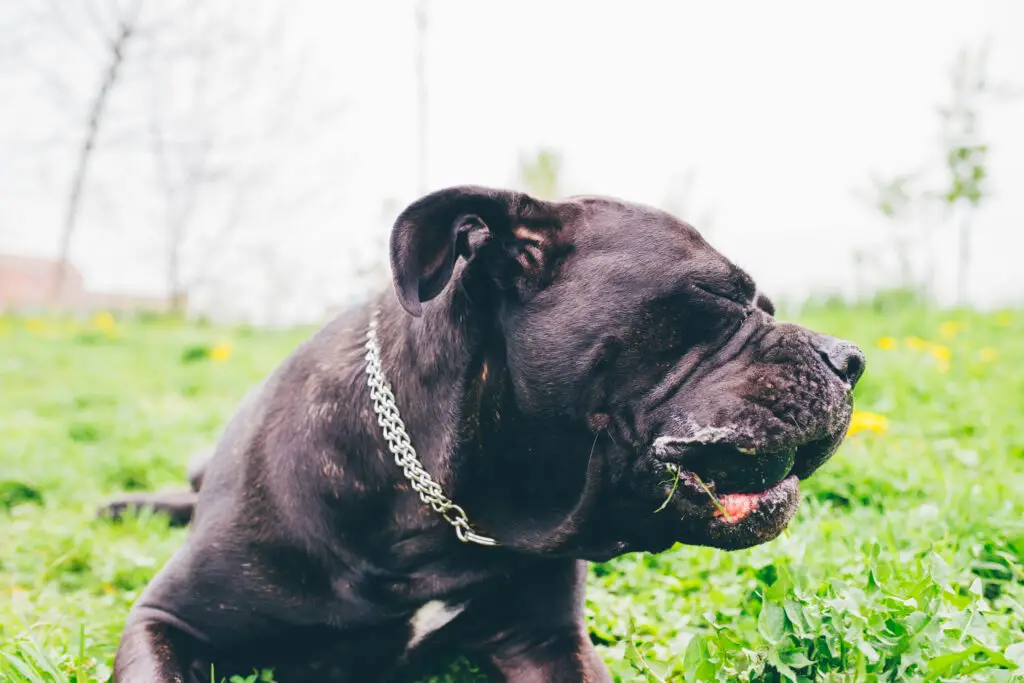
Infection and Injuries Caused By Dog Bites
Many dogs bite, but people often think it’s only large breed dogs that can be dangerous. Large and small dogs can cause serious damage to their skin, bones, or muscles. A dog bite can result in physical and emotional injuries in children as well as adults.
Dog bites often result in painful physical injuries that can be painful and costly to treat. At the same time, victims suffer emotional repercussions such as paranoia, a lifelong fear of dogs, and even post-traumatic stress disorder (PTSD).
In addition to leaving physical scars, a dog attack can have long-lasting emotional effects on you.
Types of Dog Bite Injuries
The following are just some examples of the types of injuries that can occur from a dog bite:
- Abrasions: This refers to superficial damage to the skin. Mild abrasions, or grazes, do not scar, but deep abrasions may lead to scarring. The upper layers of the skin are damaged or completely removed in the injury, causing slight bleeding.
- Lacerations: Are irregular wounds that result from the tearing of skin and tissues or from a blunt impact to soft tissue overlying hard tissue.
- Puncture wounds: These occur when a dog’s teeth or claws dig into the victim’s skin, completely puncturing it.
- Incisions or incised wounds: Caused by clean, sharp-edged objects (claws or teeth). These types of injuries are typically classified as cuts rather than actual wounds.
- Tissue loss: Often, cuts and wounds caused by dog bites can lead to tissue loss, causing deformity to the injured area.
- Avulsion: Defined as the tearing away or separation of a piece of an entire structure. This can include small pieces of the flesh to be torn away from the body or complete body parts being separated from the body.
- Crush injuries: Crush injuries occur when a body part is subjected to high degrees of force or pressure. Crush injuries can cause bleeding, bruising, compartment syndrome, fractures, and lacerations.
- Fractured bones: Cracks or breaks in the bones caused by high-force impact or stress, often from massive bite force.
- Sprains and strains: Sprains are injuries which occur to ligaments and are caused by the sudden over-stretching of the ligament. In many cases, the ligament is only stretched. But it is also common for them to completely tear.
- Scars: Every wound will result in a scar, ranging in severity depending on the type of wound. Some will fade over time, while others will require cosmetic surgery to repair. Some scars can become permanent.
- Nerve damage: A serious dog bite can result in permanent nerve damage, sometimes severe.
- Infections: Infections from untreated dog bites and wounds are common due to the number of bacteria carried by dogs. Dogs can also carry many diseases and organisms that have diseases, all of which can be passed on to the victim during an attack. It is essential to wash and treat all wounds immediately to avoid infection.
In the case of rabies, symptoms may take weeks or months to appear and include numbness or tingling at the bite site, hallucinations, and paralysis.
Tetanus, another potential risk from animal bites, can cause muscle stiffness, particularly in the neck and jaw, often referred to as “lockjaw”
Common Infections from Dog Bites
Pasteurella (bacteria that can cause cellulitis). Pasteurella is a genus of bacteria commonly found in the mouths of dogs and cats. It is a frequent cause of infection following animal bites.
- Infection and Symptoms: When Pasteurella bacteria are introduced into a wound, they can cause a rapidly progressing infection known as cellulitis. Symptoms typically develop within 24 hours of the bite, including redness, swelling, pain, and tenderness around the wound area. Fever and a general feeling of illness may also occur.
- Treatment: Prompt treatment with antibiotics is essential to prevent the spread of the infection. Penicillin is often the first choice, but other antibiotics may be used based on the patient’s medical history and any antibiotic resistance patterns.
Capnocytophaga (bacteria that can lead to sepsis). Capnocytophaga canimorsus is a bacterium found in the mouths of dogs and cats. While it doesn’t cause illness in these animals, it can be dangerous to humans, especially those with weakened immune systems.
- Infection and Symptoms: In humans, Capnocytophaga can cause various illnesses, from cellulitis to life-threatening sepsis. Symptoms might include blisters around the wound, fever, diarrhea, vomiting, and muscle and joint pain. Sepsis, characterized by a rapid heartbeat, rapid breathing, fever, chills, and confusion, can develop in severe cases.
- Treatment: Early administration of antibiotics is crucial for treating capnocytophaga infections. The choice of antibiotic may vary depending on the specific circumstances and sensitivity of the bacteria.
Rabies. Rabies is a deadly virus that affects the central nervous system. It is transmitted through the saliva of infected animals, including dogs.
- Infection and Symptoms: The initial symptoms of rabies may be flu-like, including fever, headache, and general weakness. As the disease progresses, neurological symptoms develop, such as anxiety, confusion, paralysis, hallucinations, and hydrophobia (fear of water). Without prompt treatment, rabies is almost always fatal.
- Treatment: Immediate wound cleaning and rabies vaccinations are required after a potential exposure to prevent the virus from causing illness.
Tetanus. Clostridium tetani, a bacterium that can enter the body through cuts or puncture wounds like those from dog bites, is the cause of the bacterial infection known as tetanus.
- Infection and Symptoms: Tetanus affects the nervous system, leading to muscle stiffness and spasms. The jaw and neck muscles are often affected first, leading to the condition commonly known as “lockjaw.” Without treatment, tetanus can cause severe muscle spasms and breathing difficulties and can be life-threatening.
- Treatment: Tetanus infection requires immediate medical attention. Treatment may include tetanus immunoglobulin injections, antibiotics, and supportive care. Vaccination is the best prevention.
MRSA. MRSA (Methicillin-Resistant Staphylococcus Aureus) is a type of staph bacteria that is resistant to many antibiotics. While MRSA infections are commonly associated with healthcare settings, they can also occur in the community, including through dog bites.
- Infection and Symptoms: MRSA can cause skin infections that may appear as swollen, painful red bumps that might resemble pimples or spider bites. The area may be warm to the touch, full of pus or other drainage, and accompanied by a fever.
- Treatment: MRSA infections require specific antibiotics that can still affect the resistant bacteria. Treatment also involves draining the infection, if necessary. Proper wound care and hygiene are crucial to preventing the spread of MRSA.
Treatment for Dog Bite Injuries
- Stop bleeding by applying pressure
- Thoroughly wash bite wounds with soap and water
- Seek medical attention to assess wounds, provide stitches if necessary, and prescribe antibiotics.
- Elevate injured limbs to prevent swelling
- Monitor for signs of infection like redness, pus, swelling, and fever
Animal bites pose risks that can be managed through prevention and prompt treatment. Avoiding contact with unfamiliar animals, especially stray or wild ones, reduces the risk of bites.
Recovery depends on the severity of the wound and the presence of infection, with underlying health conditions potentially lengthening the recovery period.
Awareness, prompt treatment, and preventive measures are crucial in mitigating complications and ensuring a swift recovery. Consulting a healthcare professional is important if bitten by an animal.
Managing Risks and Complications from Dog Bite Injuries
Dog bites, while often seen as minor injuries, can pose significant risks to many of us, leading to a range of complications if not properly managed.
Dogs’ mouths can harbor numerous species of bacteria, including Pasteurella multocida, Staphylococcus aureus, and Capnocytophaga canimorsus, leading to cellulitis, sepsis, and even rabies.
Rabies, although rare in the United States thanks to widespread vaccination of animals, remains a concern, especially in cases where the history of the animal’s vaccinations is unknown.
Following a dog bite, symptoms of infection include redness, fever, swelling, pus at the wound site, and pain, mainly around joints and tendons. Immediate steps following a dog bite should consist of thoroughly washing the wound with soap and water, applying a clean bandage, and seeking medical attention.
A physician’s examination is crucial to assessing the extent of damage, including nerves and blood vessels, and the potential for deeper infections that may affect the central nervous system.
The doctor may recommend antibiotics, such as penicillin, to prevent or treat infections like Pasteurella, Streptococcus, and Staphylococcus species. In some cases, tetanus shots may be necessary, especially if the patient lacks a recent vaccination history.
Management of dog bite wounds may involve debridement (removal of damaged tissue), stitches for severe lacerations, and possibly cultures to identify specific bacteria present. This is particularly important for patients with a compromised immune system, such as those with diabetes, cancer, or a history of alcohol abuse, as they are at higher risk for developing severe infections.
The choice of antibiotic therapy often depends on the patient’s medical history and the suspected causative agents. Complications from dog bites can range from acute infections, such as sepsis and pneumonia, to long-term consequences like disfigurement, loss of function in extremities, and even failure of joints due to infection.
Families and patients should be aware of the signs of infection and the necessity for follow-up care, including wound dressing changes and possibly a series of visits for wound management and recovery monitoring.
Preventive measures against dog attacks involve educating communities about safe interaction with animals, the importance of vaccinating pets against rabies and other diseases, and the steps to take following an animal bite.
Awareness and education are key components in reducing the incidence of dog bite-related injuries and ensuring the health and safety of both humans and animals.
Microbiology of Animal Infections
According to the National Library of Medicine, a scientific study published on PubMed Central (PMC), animal bite wound infections in humans are often caused by a mix of aerobic and anaerobic microorganisms, typically reflecting the oral flora of the biting animal.
The review covers infections from various animals, but the literature mainly comprises small case series or reports with limited systematic studies. There is a need for more organized research to better understand the microbiology of these infections, including utilizing optimal techniques for pathogen isolation and establishing consistent criteria for infected wounds.
According to the study, the microbiology of animal bite wound infections in humans is diverse, often involving a mix of aerobic and anaerobic microorganisms reflecting the oral flora of the biting animal.
The victim’s own skin or environment, as well as the animal’s diet, can also have an impact on this. The review focuses on infections from various animals, but the medical literature mainly consists of small case reports with limited systematic studies.
There is a need for more organized research to better understand and define these infections, including gathering information from zoos, veterinary practices, and rural clinics and hospitals.
The microbiology of infected animal bite wounds in humans is often polymicrobial, meaning it involves a mixture of different microorganisms. Common bacteria found include both aerobes (require oxygen) and anaerobes (do not require oxygen).
Bacteria recovered from bite infections frequently reflect the oral flora (bacteria in the mouth) of the biting animal. The animal’s diet and foods consumed can have an impact on its oral bacteria.
Common bacteria isolated from dog bites include Pasteurella, Streptococcus, Staphylococcus, Capnocytophaga, and Neisseria species. Cat bites more commonly contain Pasteurella multocida as well as Streptococcus and Staphylococcus species.
Limitations of studies on bite infections include a lack of consistent criteria for defining infection, a lack of understanding of the pathogenic roles of all cultured organisms, and the need for more systematic research in veterinary and zoo settings.
More research is needed to better characterize the diverse polymicrobial microbiology of animal bite infections in humans, as this can inform more effective antibiotic treatment.
In summary, animal bite wounds involve a complex mix of oral microbes from the biter’s mouth, with some commonalities but also variation between different host species and individual animals.
Citations for the study:
[1] https://www.ncbi.nlm.nih.gov/pmc/articles/PMC3122494/
[2] https://pubmed.ncbi.nlm.nih.gov/21482724/
[3] https://journals.asm.org/doi/abs/10.1128/cmr.00041-10
[4] https://www.nejm.org/doi/full/10.1056/nejm19990114340020
There are a lot of variables that went into the study, and it’s a very in-depth review of the infection process. You can read the entire study here.
Different Levels of Dog Bites
Level 1: Aggressive behavior like growling or snapping, but no skin contact from the teeth. The dog is trying to scare the victim away.
Level 2: The teeth touch the skin but do not puncture it. This may leave a minor bruise or scratch but draw no blood. It is a more serious warning.
Level 3: One to four puncture wounds from a single bite, less than half the length of the dog’s canine teeth. Minor tissue damage, but potentially dangerous.
Level 4: One to four puncture wounds from a single bite, with at least one deeper than half the length of the dog’s canine teeth. Causes significant tissue damage involving deep bruising or tears. Risk of nerve, vessel, or bone damage.
Level 5: Multiple Level 4 bites over several attacks. Extremely dangerous behavior shows the dog’s intent to cause severe maiming injury. It often involves extensive tissue damage requiring reconstructive surgery or resulting in permanent disfigurement or disability.
Level 6: Any bite that results in the death of a human, whether due to blood loss, organ damage, secondary infection, or other causes directly stemming from the attack.
Higher bite levels indicate increased danger from the dog and a greater need for behavioral intervention or restrictions to prevent further harm. Even minor bites should not be taken lightly as warning signs.
What Are The Risk Factors For Dog Bites?
1. Unfamiliar Animals: Dogs that are unfamiliar with a person are more likely to bite. Encounters with stray dogs or pets outside of their home environment can increase the risk of aggression.
2. Behavior of the Person: Provocative actions, such as teasing, startling, or invading a dog’s space, can lead to bites. Children are particularly at risk because they may not recognize the warning signs of aggression and are less able to defend themselves.
3. Lack of Supervision: Incidents involving children often occur without adult supervision. Children should always be taught how to interact safely with dogs and should be monitored when around them.
4. Dog’s Health: Dogs suffering from illnesses or pain are more likely to bite as a defensive reaction. A dog with a history of abuse or neglect may also be more prone to aggressive behaviors.
5. Breed and Behavior History: While any dog can bite, certain breeds may have a higher propensity for aggression due to genetic, behavioral, or training factors. Additionally, dogs with a history of aggressive behavior or previous biting incidents are more likely to bite again.
6. Failure to Neuter/Spay: Dogs that are not neutered or spayed may exhibit more aggressive behaviors. Neutering or spaying can reduce aggressive tendencies in dogs.
7. Poor Socialization: Dogs that are not properly socialized from a young age may become fearful or aggressive toward unfamiliar people, animals, and situations.
8. Protective Instincts: Dogs may bite to protect their territory, owners, or puppies. Understanding and respecting a dog’s protective instincts can help prevent bites.
9. Environmental Stressors: Loud noises, crowded spaces, and other stressful environments can increase a dog’s anxiety and potential for aggression.
10. Victim’s Vulnerability: Certain individuals, such as small children, the elderly, or those with disabilities, may be more vulnerable to dog bites due to their size, strength, or inability to read and respond to warning signals.
By recognizing these risk factors, individuals can take proactive steps to minimize the likelihood of dog bites, such as educating themselves and others on safe interactions with dogs, supervising children around dogs, and ensuring dogs are healthy, well-trained, and correctly socialized.
Seeking Legal Information on Dog Bite Injuries
Legal Aspects
- Dog owners may be liable for injuries and damages caused by their dogs.
- State laws differ on strict liability vs. negligence for dog bites.
- Provocation by victims can reduce owner liability in some states.
- Consult a dog bite lawyer to understand your legal options.
If you have suffered a dog bite or attack injuries, please get immediate medical attention, treatment, and care. Contact a California dog bite lawyer for more information about pursuing your legal rights. As a victim of a dog attack, you have the right to hold dog owners financially responsible for their negligence.
A dog bite case can be very complex and requires the skills of an attorney who has spent many years in local courts fighting dog attack cases. Our attorneys are trial lawyers with years of expertise in catastrophic and serious injury cases. Call today for a free legal consultation about your dog bite case.














